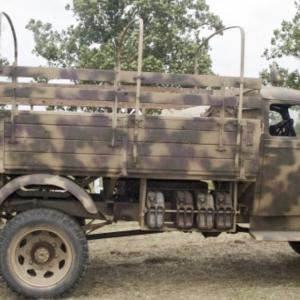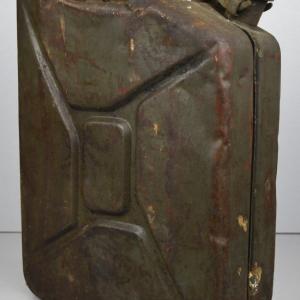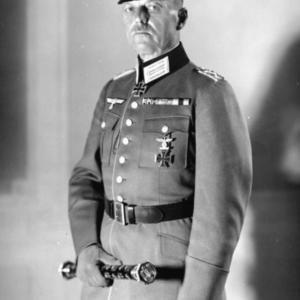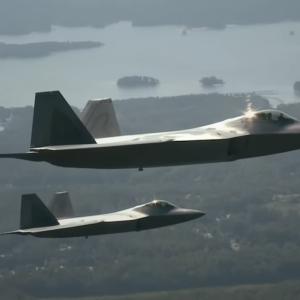
Historic Black Watch Regiment
The Black Watch, officially known as the Royal Highland Regiment, is one of the most iconic infantry regiments in the British Army. Its history dates back to the early 18th century, in a time of political unrest and social upheaval in the Scottish Highlands following the Jacobite uprisings. The regiment’s unique name and distinctive dark tartan have become enduring symbols of discipline, courage, and Scottish military heritage.
The origins of the Black Watch trace back to 1725, when General George Wade, responsible for securing peace in the Highlands after the failed Jacobite rebellion of 1715, authorized the formation of a number of Independent Companies. These companies were raised from loyal Highland clans, including the Campbells, Frasers, Grants, and Munros. Their task was to police the Highlands, prevent cattle raiding, and suppress any remaining Jacobite sympathies. The companies were often referred to in Gaelic as "Am Freiceadan Dubh," meaning "The Black Watch," possibly a reference to both the dark-colored tartan they wore and their function of watchful guardianship.
In 1739, these companies were formally reorganized into a regiment of the line. This new formation became known as the 43rd Highland Regiment of Foot, later renumbered as the 42nd Regiment of Foot in 1748. The regiment was led by Colonel John Lindsay, Earl of Crawford, and for the first time in British military history, a regular infantry unit was composed almost entirely of Highlanders. The Black Watch represented a turning point in how Highlanders were seen—not just as rebels or outsiders, but as disciplined soldiers serving the Crown.
Their first major overseas deployment came during the War of the Austrian Succession. In 1743, the regiment was sent to Flanders to join British and Allied forces fighting against France. At the Battle of Fontenoy in 1745, they earned praise for their performance under fire, despite the Allied defeat. Later that same year, the regiment was recalled to Scotland to help suppress the Jacobite rising led by Charles Edward Stuart, also known as Bonnie Prince Charlie. Ironically, Highland soldiers in the Black Watch found themselves fighting against other Highlanders who supported the Stuart claim to the throne. They participated in the decisive Battle of Culloden in 1746, which ended the Jacobite cause once and for all.
As the British Empire expanded during the 18th and 19th centuries, the Black Watch was frequently deployed in colonial conflicts. During the Seven Years’ War, the regiment was sent to North America, where it fought at the Battle of Ticonderoga in 1758. Although the British suffered heavy casualties, the Black Watch demonstrated extraordinary bravery, and their valor at Ticonderoga earned them the right to continue wearing the kilt in uniform—an important symbol of their identity.
During the American Revolutionary War, the regiment returned to North America and participated in several key battles, including the Battle of Long Island and the Siege of Savannah. Despite the eventual British defeat, the Black Watch’s discipline and effectiveness on the battlefield earned them respect, even from their opponents. Their experiences in North America helped solidify their reputation as one of the British Army’s elite regiments.
In the early 19th century, the Black Watch played a prominent role in the Napoleonic Wars. They were active in the Peninsular War under Sir Arthur Wellesley, later known as the Duke of Wellington. They took part in significant battles such as Talavera, Bussaco, Fuentes de Oñoro, and Salamanca, often leading bayonet charges and engaging in intense close-quarter fighting. In 1815, the regiment fought at the Battle of Waterloo, where they helped repel the French Imperial Guard and contributed to the final defeat of Napoleon Bonaparte.
Throughout the Victorian era, the Black Watch continued to serve the British Empire in various global conflicts. During the Crimean War, they fought in the battles of Alma, Balaclava, and the Siege of Sevastopol, enduring harsh conditions and fierce combat. In 1858, the regiment was sent to India during the Indian Rebellion (also known as the Sepoy Mutiny), where they helped restore British control and suppress the uprising. They also served in later campaigns in Egypt, Sudan, and South Africa.
By the early 20th century, the Black Watch had become one of the most highly regarded regiments in the British Army, and its role would prove vital in both World Wars. During the First World War (1914–1918), the regiment expanded to include multiple battalions, both regular and territorial. In total, 25 battalions of the Black Watch served during the war. They were involved in nearly every major campaign on the Western Front, including the Battles of the Somme, Loos, Arras, Ypres, and Passchendaele. The 1st and 2nd Battalions were among the first British units sent to France in 1914 as part of the British Expeditionary Force. The regiment suffered heavy casualties, with over 8,000 men killed. Despite the losses, they were known for their steadfastness in the trenches and the ability to hold critical positions under intense fire. The bravery of Black Watch soldiers earned them hundreds of gallantry awards, including several Victoria Crosses.
During the Second World War (1939–1945), the Black Watch again served with distinction in multiple theaters of war. The regiment was deployed in France with the British Expeditionary Force and took part in the early fighting before the Dunkirk evacuation. Later, they were heavily engaged in North Africa, participating in the crucial campaigns at El Alamein and Tunisia. In 1943, the regiment took part in the Allied invasion of Sicily and then fought through the brutal Italian Campaign, including the battles at Monte Cassino. Other battalions were involved in the D-Day landings in Normandy in June 1944 and the subsequent campaign through Northwest Europe. As in the previous war, Black Watch soldiers displayed outstanding courage, earning further decorations and maintaining their fearsome reputation among both allies and enemies.
By the end of the Second World War, the regiment had once again suffered significant losses but emerged with its honor intact and its legacy strengthened. The Black Watch had proven itself across continents and in every type of terrain and battle, from desert warfare to the trenches and the frozen forests of Europe. Its soldiers were known for their fierce loyalty, battlefield resilience, and deep sense of regimental pride.










